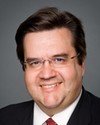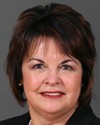Obviously I've listened with interest to the searching questions the committee has already asked of the regulator, so I don't intend to reprise all of that. Let me start by introducing what Bruce Power is. I'm sure you may be aware of some of these facts.
We are Canada's only private sector nuclear operator on the shores of Lake Huron and we operate North America's largest operational nuclear facility. As this topic brings about, we are in the process of refurbishing and returning to service 1,300 megawatts of nuclear plant that was retired from service some 15 years ago.
As part of the process, of course, we do have very clear regulatory guidelines governing everything we do, frankly, but as we went through the decision-making on the return to service of these units, we did go through the environmental assessment process that preceded our project, which commenced for real in late 2005.
The first slide gives a bit of background. When you turn to slide 2 you can get a sense of the magnitude of the activity that represents this refurbishment project. We are replacing many of the major life-cycle components, including all the reactor core material where we are dismantling all the reactor pressure tubes and calandria tubes and all the reactor internals. We are cutting them into small pieces and storing them on site.
One of the unique features of this project is that each of our reactors has eight steam generators. If you consider the picture you're looking at on slide 2, the four square blocks equate to the four reactors. Units 3 and 4 are in operation, and if you notice the third one from the left, you see a large crane parked outside unit 2. It was through the use of this crane that my colleague, Patrick Lamarre from SNC-Lavalin, took on board the project to remove these steam generators from their location and to replace them with new ones.
As was mentioned previously, of course, many elements of this project went into the planning phase. Everything we do in the industry is governed by two things: first, a commitment to meet our regulations; and second, to seek continuous improvement.
Dr. Binder mentioned the whole principle of “as low as reasonably achievable”, the ALARA principle. It's one that I'd say governs the very safe operation of Canada's nuclear industry. We should recognize that we have an industry with a stellar safety record, and it compares very well with the nuclear community internationally. I can say that because, as my accent would let you detect, I started my 40-year career in this industry in a different place, so I know what U.K. standards look like, I know what U.S. standards look like, and I know what Canadian standards look like. So I'm able to give some degree of objectivity to how the Canadian nuclear industry compares with others.
On slide 3, we're trying to give a principle here. As I said, I'm not trying to talk about the half life of radioactive isotopes, because, as was just pointed out, I can tell you the difference between heavy and light water reactors too and eat up an entire hour of this committee hearing. This can be a very complicated subject, or it can be a simple subject based on good practice and principles.
This diagram here we call “The Right Thing to Do”, but this is not a Bruce Power diagram. This comes from international standards and procedures. This is the internationally accepted mandate that all of us have to minimize our environmental footprint. It's true in domestic waste today where we consider what our standards looked like 20 years ago when we did not segregate our domestic waste, and look at where we are today: we separate plastics, we recycle, we turn plastic water bottles into chairs. We do many things to reduce our environmental footprint. No surprise then that the same obligation is placed on the nuclear industry.
As we continue to evolve our thinking, we all have an obligation to reduce our environmental footprint. So when we talked about the possibility of storing these steam generators--and to answer the question someone will ask, if we refurbish all these units on our site, there will be 64 steam generators: eight times eight. We've done two, so that gives us 16 steam generators.
Our intention would be to refurbish all of these units as part of Ontario's long-term energy plan. A critical part of securing the extra life will involve replacing all 64 steam generators over the next 20 years.
Clearly one of the issues we have is whether it is environmentally responsible. Is it the best option we can think of to build 64 buildings, which look very similar to the size of this room, for the sole purpose of storing these steam generators? For within that environment, we are more than aware that there are four grams of radioactive isotope material inside a 100-tonne vessel, which has to be secured and looked after for a very long time.
That was the option open to us. That was the bounding option and our planning assumption for environmental assessment.
But none of us can be satisfied that's the best we can do. As we looked to international practice, we saw a number of utilities facing the same timetable as us, the same requirement to replace many of their aging components. And we started to see a change occur. Rather than store things for the long term, people developed techniques and strategies and approaches.
In fact, Studsvik is a world leader in this, both in their place in Sweden and also in the U.S., where they're going through a very sound environmental practice. As we look at that, this is not about commercial gain; it's about the right thing to do.
Would I like this facility to be right next door? Sure, I would. But that's not the case. It's a unique facility, created for a special purpose, to manage a high volume of these sorts of activities. When we understood exactly what their process looked like—we saw their international standards and the regulations they operate in—it became a credible option for us.
The next thing we had to do was consider how we move these steam generators from their place on Lake Huron to the facility in Sweden. How do we do it safely and responsibly? It was mentioned previously that the regulations are mature in this regard; they're not new regulations created for this purpose. They are regulations that have been in place for a very long time. They are tested regularly, and they are enacted and enforced regularly.
The difference, of course, in this situation is that we cannot fit steam generators into the standard packaging. This has been said already here today, and it was clear in the regulatory hearings. Were it possible to fit a slab steam generator in an approved standard package, that would have occurred and it would have gone. Actually for Bruce Power, the same activities that we undertook would also have occurred.
Moving large components in our community creates the risk of distorting traffic flow and affecting a small rural community. When we embarked on this project, we treated that as being the issue. That was the disruption we were going to create in our community. We treated it in the same way when we moved the new steam generators in. The reason for that was because we were already comfortable that the radioactive nuclides met all of the regulatory standards.
Of course, when you begin that consultation, you run the risk of attracting other attention, for different reasons and different intent. I can tell this committee that our purpose was to look at this triangle of environmental footprint and try to move up the pyramid. That's the right thing to do.
When I talk about our activities, I can say we're obviously not at all immune to the public sentiment. We're not idiots. We know what's happening. We can see a number of important things. Firstly, very responsible elected officials are expressing concern, which is entirely what they're elected to do. It's not just in this room but in every municipality along the route. I have no problem with that—none whatsoever. The problem we do have, and the problem we have run into, is that it's always easier to alarm than it is to inform.
We have tried manfully to inform. We have issued documents like this: “The Right Thing To Do”. We've explained exactly what we do. We have set up websites. We've had mailshots. We've held open house meetings. We have tried our best to deal with those issues. I don't suggest for a moment that we can be everywhere and we can convince every person. I've been in the industry a long time, and I never expect unanimous consent. It will never happen.
The question we have to answer is whether we have done all that's reasonable given the actual intent of our activity.
As I say, if you start on the basis that this is a low-level radioactive activity with marginal risk, then the amount of consultation is affected by that. We have gone far and beyond that as an attempted response to the sentiment.
As I say, I fully understand. Some very well-regarded public figures have expressed concern. I get that. I do understand that. But I would hope—it's always been my hope—that Canadians have comfort in the strong regulatory body that exists. Just because the CNSC agrees with us doesn't mean I've got my hand up their back. It's never been the case, and it never will be the case. A good licensee always needs a strong regulator. It's always been so. It gives the public confidence. It gives us the confidence that we know where the benchmarks are. Good regulations do that for us.
As I say, I can talk at length about the half-life of isotopes, but I don't think I'd be doing a service to the committee. All of those things were fully dealt with in a commission hearing.
I'm very open to answering any questions and concerns that people have. If you want to talk about the science, we can do that too.
I want to reassure you that the basis of what we're doing is grounded in good environmental policy. You could not enact good environmental policy while putting Canadians at risk in the process.
We have reassured ourselves of our ability to seal these steam generators, to characterize them, to transport them, and to deal with them in a responsible way. That's what I believe we were tested on in the regulatory proceedings. I believe we passed that test.
Thank you.



